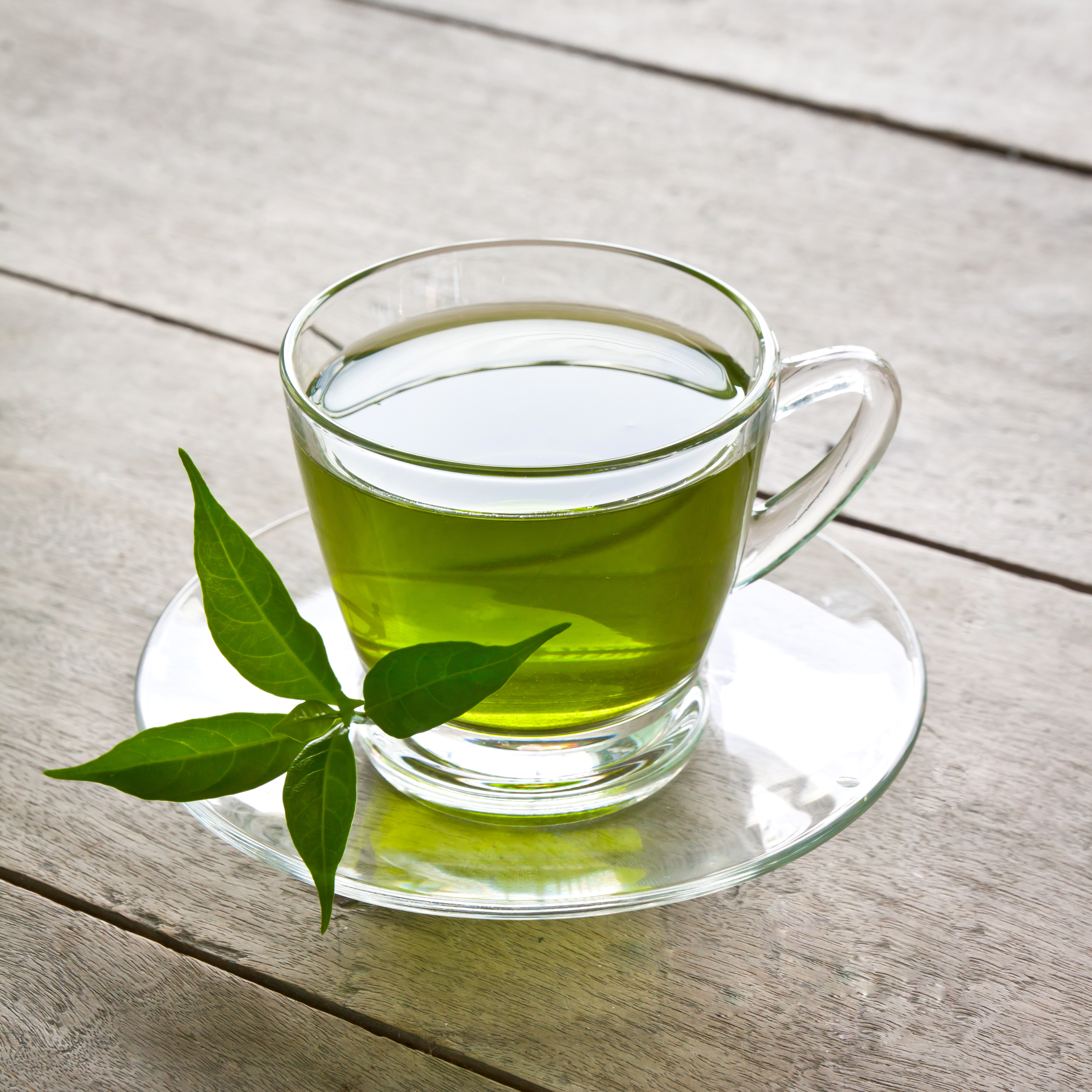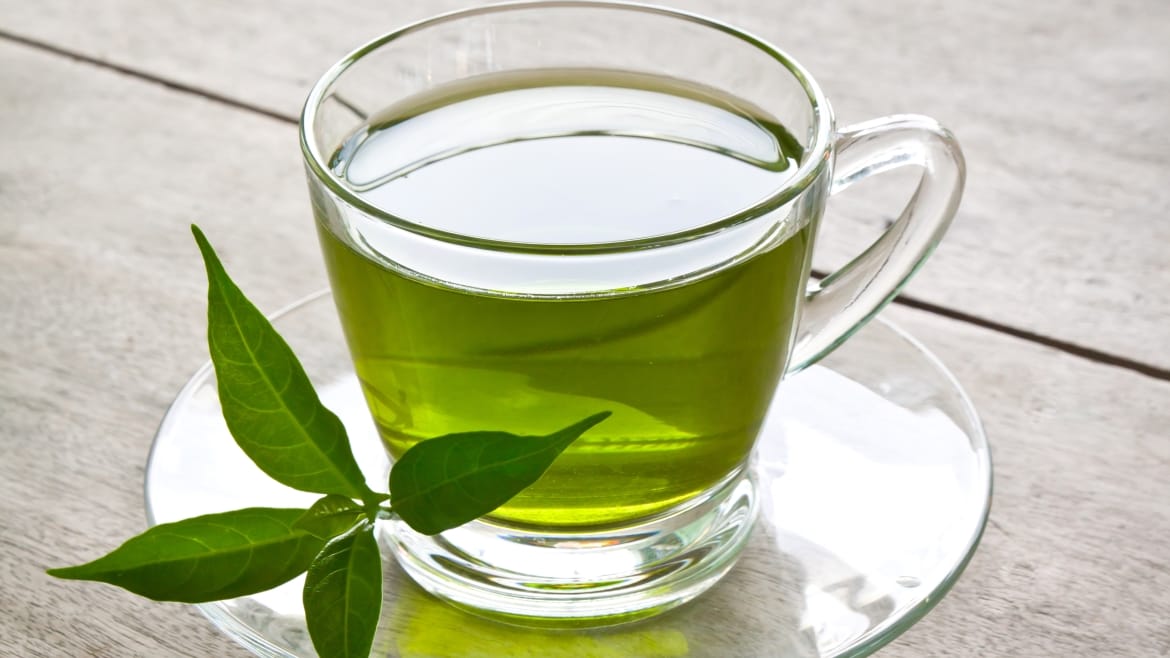Green tea is a popular beverage that is consumed by millions of
 people around the world for its numerous health benefits. While green tea is widely regarded as a healthy drink, there is a common concern about its potential to cause teeth stains. In this blog, we will discuss whether green tea stains teeth and how it compares to other beverages like coffee.
people around the world for its numerous health benefits. While green tea is widely regarded as a healthy drink, there is a common concern about its potential to cause teeth stains. In this blog, we will discuss whether green tea stains teeth and how it compares to other beverages like coffee.
Does Green Tea Cause Teeth Stains?
Green tea may cause some mild discolouration of teeth over time, however, the level of staining is generally less severe than other drinks with higher tannin content.
Like many other foods and drinks, green tea contains natural compounds known as tannins. Tannins are responsible for the astringent taste of tea and are also known to cause teeth stains. However, the tannin content in green tea is relatively low compared to other drinks like black tea, coffee, and red wine.
Moreover, green tea also contains a high level of catechins, a type of antioxidant that can reduce the formation of plaque on teeth and prevent tooth decay. Studies have also shown that green tea can help inhibit the growth of harmful bacteria that can cause bad breath and tooth decay.
Does Green Tea Stain Teeth More Than Coffee?

When it comes to staining potential, coffee is known to be more notorious than green tea. Coffee contains higher levels of tannins and is often more acidic, which can lead to tooth discolouration over time. Additionally, coffee contains dark pigments known as chromogens that can adhere to teeth and cause staining.
In comparison, green tea is considered to be less staining than coffee. As mentioned earlier, the level of tannins in green tea is relatively low, and its lighter colour compared to coffee means it may have fewer pigments that can adhere to teeth. However, it’s worth noting that the staining effects of any beverage, including green tea, can vary depending on factors such as frequency of consumption, oral hygiene practices, and individual factors such as tooth enamel and susceptibility to staining.
How Is Green Tea Made?

Green tea is made from the leaves of the Camellia sinensis plant.
The process of making green tea involves several steps, which include:
Harvesting: The leaves of the Camellia sinensis plant are carefully hand-picked or machine-harvested depending on the type of green tea being produced. The timing of the harvest is crucial as it determines the quality and flavour profile of the final tea.
Withering: After harvesting, the leaves are spread out and allowed to wither for a short period of time. This helps reduce the moisture content of the leaves and makes them more pliable for further processing.
Heat treatment: The withered leaves are then subjected to heat treatment, which can be done through various methods such as pan-firing, steaming, or oven-drying. Heat treatment helps inactivate the enzymes present in the leaves and prevents oxidation, which is responsible for the darkening of the leaves and the conversion of green tea into other types of tea.
Rolling: The heat-treated leaves are then rolled, which helps shape the leaves and release their natural oils. Rolling also helps break down the cell walls of the leaves, releasing the enzymes and initiating the oxidation process in some types of tea, but not in green tea.
Drying: The rolled leaves are then dried to remove any remaining moisture and halt the oxidation process. This is a crucial step in preserving the green colour and retaining the fresh, grassy flavour of green tea.
Sorting and packaging: Once the leaves are completely dry, they are sorted based on their size, shape, and quality. The sorted leaves are then packaged and sealed to preserve their freshness and flavour.
It’s important to note that the specific process of making green tea can vary depending on the region, type of green tea, and the desired flavour profile. Some green teas may also undergo additional steps such as blending, scenting, or flavouring to create unique and distinct teas with different flavours and aromas.
Does Matcha Green Tea Stain Your Teeth?

Matcha green tea is a type of powdered green tea that has gained popularity for its unique flavour, vibrant green colour, and potential health benefits. Matcha can stain your teeth over time.
Matcha, like other types of tea, contains natural compounds known as tannins. Tannins are a type of polyphenol that can bind to proteins in saliva and form a film on teeth, potentially leading to tooth discolouration over time. However, the level of tannins in matcha is relatively low compared to other drinks like coffee and black tea.
Additionally, matcha contains a high concentration of antioxidants called catechins. Catechins have been found to have antibacterial properties and can help prevent the growth of harmful bacteria in the mouth, which can contribute to tooth decay and bad breath.
The method of preparing matcha can also impact its staining potential. Traditional matcha preparation involves whisking the powder with hot water, resulting in a smoother and less astringent taste compared to steeping regular green tea leaves. This may potentially reduce the staining potential of matcha as the tannins are not soaked for a prolonged period of time.
Furthermore, good oral hygiene practices, such as regular brushing, flossing, and dental cleanings, can help prevent or minimize tooth discolouration from matcha or any other food or drink. Proper oral care can effectively remove stains and maintain the overall health of teeth.
In conclusion, while matcha green tea contains tannins that can potentially cause tooth discolouration, the tannins in matcha are relatively low compared to other drinks. Additionally, matcha’s high antioxidant content and the method of preparation may reduce its staining potential. Practising good oral hygiene and consuming matcha in moderation as part of a healthy diet can help minimise any potential staining effects on teeth.
Does Tea Make Your Teeth Yellow?
Tea, including green tea, black tea, and other types of tea, can potentially cause tooth staining and contribute to teeth appearing yellow. The staining is primarily caused by the presence of tannins, which are natural compounds found in tea and are responsible for their astringency and bitter taste. Tannins can bind to the proteins in teeth and form stains, leading to discolouration over time.
Green Tea Staining FAQs
Bleeding When Brushing Teeth
The best thing to do is speak to your dentist as soon as possible if your gums bleed when brushing. They will be able to conduct a thorough examination of your oral hygiene and give you relevant advice for your bleeding to stop.
However, there are a few slight tweaks you can make to your oral routine to minimise problems and your gums from bleeding.
Some of these are:
- Brush your teeth twice daily for a minimum of two minutes.
- Using a toothbrush with a small head and soft round bristles, paying most attention to the gum line.
- Floss daily to remove plaque from hard-to-reach areas, like between your teeth.
- Visit your dentist regularly to allow them to highlight any further issues you may have.
Your oral hygiene may be really good however, it is still possible for some plaque in hard-to-reach places to turn into tartar. This leads to gum problems increasing with age.
This displays how vital it is to apply the steps mentioned above into your daily routine to help lower the chances of plaque buildup, tartar and bleeding.
How Long Does It Take For Bleeding Gums To Heal?
Bleeding should stop anywhere between 3-10 days if gums are treated properly. It is also important to make sure you floss regularly to help heal your gums.
If the plaque between your teeth has mineralised and becomes stuck, you’ll need to visit your dentist urgently. There’s only so much you can do when possibly dealing with tartar.
Blood When Brushing Teeth But No Pain
Whether you feel pain or not when brushing. Bleeding should never be ignored. If your gums bleed when you brush, it is possible that you may have gum disease. This can lead to bad breath to inflamed and receding gums and eventually tooth loss.
A condition called gingivitis becomes present once plaque builds up at the gum line. Plaque that isn’t removed will gradually harden and turn into tartar causing irritation. This will lead to increased bleeding.
What Deficiency Causes Bleeding Gums
Bleeding gums may be a signal of low vitamin C in your diet. Low vitamin C levels in the bloodstream are associated with an increased risk of gum bleeding. Increasing the intake of vitamin C can help resolve the problem.
The recommended daily intake of vitamin C for adults in the UK aged 19 -64 is 40mg. Increasing intake can help minimise chances of continuous bleeding of gums.
There are a few ways in which you can ensure you get your daily Vitamin C intake.
A few good sources of Vitamin C are the following:
- Citrus fruit such as – oranges and orange juice
- Strawberries
- Peppers
- Blackcurrant
- Brussel sprouts
- Potatoes
- Broccoli
Here at Manor House Dental, we have a team of specialists that have adequate knowledge and experience to deliver the appropriate advice on how to treat any of your dental problems to do with bleeding gums.
Bleeding Gums FAQs
Is It Normal For Gums To Bleed When Brushing Teeth?
- Yes – bleeding gums is completely normal. Luckily enough it is typically not that serious either. One may experience bleeding after brushing or flossing which can affect sensitive gums. Tartar buildup is a key factor in bleeding gums and it is caused by a growth of bacteria at the gumline.
- Due to hormonal changes that occur during the menstrual cycle, some women experience oral changes: red swollen gums, swollen salivary glands or bleeding gums. When hormone levels are high, women are more sensitive to the presence of plaque and bacteria.
Should I Brush My Teeth If My Gums Bleed?
- When gums bleed it is an indication of plaque buildup, the only way to remove plaque is to brush your teeth to make the bleeding stop.
What Does Gingivitis Look Like?
- Gingivitis can cause gums to become a dusky red colour, swell and bleed easily especially when brushing your teeth. A key sign of gingivitis is swollen and puffy gums. Healthy gums are the opposite, firm and fitted around the teeth with a pale pink colour.


